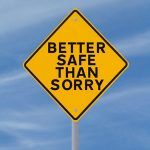
4 Essential Elements For Workplace Safety

When it comes to your organization’s highest priorities, workplace safety should always be in the top tier.
You need your workers to stay safe and able to perform their duties. Thus, you have to ensure that the work environment you put them in is one that is safe enough for them to do their jobs well with the lowest levels of risk and highest levels of workplace safety.
While no workplace is without risk, your ongoing challenge is to keep risk mitigated and keep workplace safety standards high – and constantly improving.
To this end, we have identified four essential elements to workplace safety.
Workplace Safety Rights & Responsibilities
Every worker in Ontario has the right to expect to complete his or her shift without injury or incident caused (directly or indirectly) by subpar workplace safety standards.
Ideally, no employee would have fear of danger in the workplace. However, we know that the inherent nature of some industries and occupations involves some elements of risk – e.g. working at heights, working in confined spaces, working with hazardous materials, flammables or explosives, etc.
That’s why the goal in workplace safety is to be improving safety standards constantly, as a work in progress, doing everything within your powers and within reasonable expectations to keep your workers safe.
There are certain programs you must implement and focus on if you want to encourage a safe workplace environment for your workers.
The elements of the safety programs include the following four main areas.
Management Leadership and Employee Involvement
Communication is perhaps the most important element of workplace safety.
This means communication and involvement between the employer and the employee in relation to workplace safety and health issues. Such communication would include:
- A copy of the company’s employee safety and health policy being posted clearly
- Encouragement of employee involvement in policy-making for health and safety issues
- Employee participation in safety activities and communicating understanding & questions
… among many others.
A general rule of thumb for communication with regard to workplace safety is that it is always preferable to over-communicate than to come up short or leave room for miscommunication. In our experience as leading Ontario workplace safety experts, we have seen countless instances where better workplace communication could have prevented an incident from happening or mitigated the chances of occurrence.
It is not an overstatement to say that workplace communication can prevent incidents and injuries – and can even help save lives!
Workplace Safety Analysis – Early & Often
 Regular and timely analysis of workplace conditions is essential.
Regular and timely analysis of workplace conditions is essential.
Your responsibility as a manager or supervisor in the interest of strengthening workplace safety is to ensure that efforts are made to identify and eliminate potential or existing workplace safety hazards.
This workplace safety analysis takes on the goals of:
- Reducing/ Eliminating workplace safety hazards and potential risks
- Ensuring that employees are aware of the hazard analysis for each job and process
- Ensuring that the design of the workplace focuses on the physical aspects of the work environment
The workplace safety analysis does not, of course, stop at identifying what is wrong – but rather makes recommendations and implementations to get rid of workplace safety hazards and reduce the elements of risk (in many cases eliminating said risk when possible).
Workplace Safety Hazard Prevention and Control
 Another essential element of workplace safety is to anticipate what types of risks are present and what types of incidents could occur.
Another essential element of workplace safety is to anticipate what types of risks are present and what types of incidents could occur.
Some examples of workplace safety prevention and control include:
- Maintain vehicles and equipment frequently
- Ensuring that workers are aware of how to operate and maintain their personal protective equipment (PPE)
- Training workers to handle specific situations using the proper procedures
In short, if you can prevent something bad from happening, you’re making a positive contribution to workplace safety. This can save time, save money and save lives.
Safety and Health Training and Education
As workplace safety is vital, ensuring that you have the right safety procedures and policies is an essential element of workplace safety. This comes in the form of workplace safety training and education.
Safety training includes areas such as working at heights, first aid CPR, confined space entry, as well as things like WHMIS-GHS.
- Training all individuals in the workplace properly, from the managers to the part-time employees
- Only allowing people who are authorized and instructed to do certain jobs, to actually do them
 Ensuring that employees do not do any jobs that are risky
Ensuring that employees do not do any jobs that are risky- Employees should be prepared with emergency drills
- Ensuring that you focus on the employees that are learning new operations in the workplace, so that you know if they have all the necessary job skills and hazard awareness
- Training managers and supervisor to spot hazards and understand what their responsibilities are in relation to them
Workplace safety training helps reduce risk – and it can create a great work environment that is safe and productive.
How ACT Helps with Workplace Safety Training
Since Advanced Consulting and Training Ltd.’s founding, our diverse team of certified health and safety professionals have taken great pride in their ability to deliver prompt, cost-effective and relevant workplace health and safety solutions.
As a CPO approved, TSSA accredited, WSIB approved provider, we look forward to discussing how ACT can help with your company’s safety requirements. Contact us today.





